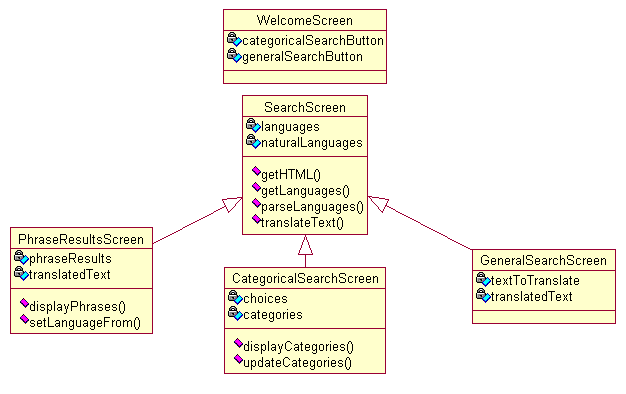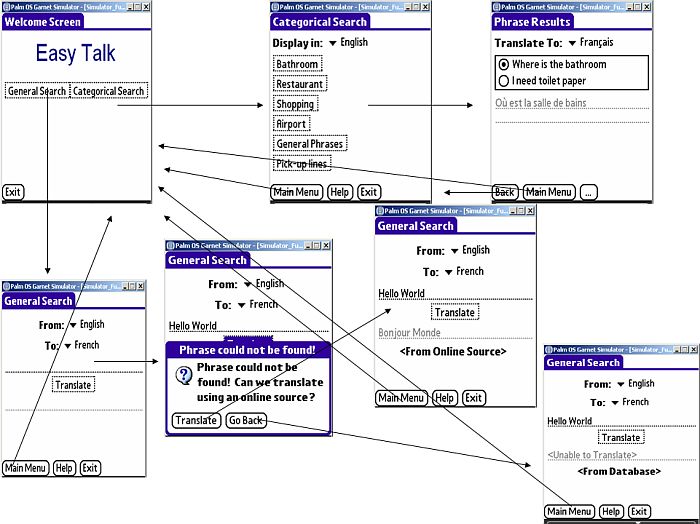

CS 262
Calvin College
Professor Keith Vander Linden
Written November 7th 2005
Revision 1.0
Introduction
Purpose/Contents of this document
This is the design specification for EasyTalk produced by the Kühabrlüst project. It contains a general blue-print of the project including: object design, database design, human-computer interface design, and references. In particular a UML class diagram with detailed descriptions of classes, attributes, etc. is included for the object design. Also an ERD (Entity-Relationship Diagram) with a complete description of the components involved is included to describe our database design. Finally a HCI (human-computer interface) is included to demonstrate a visual representation of EasyTalk and its basic flow.
General Description of the project
The Kühabrlüst project is producing a palm-based translation program called EasyTalk. The interface will be built using a down-sized version of Java, J2ME. The interface will be capable of receiving user input and sending it off to be translated, by either referring to the database or going to an online source, and then display that translation. A limited set of words and phrases will be stored and retrieved from a remote MySQL database. Perl will also be used to handle database control and text processing.
Related documents
This is a list of various references that may be useful in understanding the design of this project. More detailed reference information can be found at the end of this document.
Object Design
Class Diagrams
This is the Class Diagram for the Easy Talk user interface.

Object Dictionary
UML Database Diagram
This is the UML Diagram for the database backend for the EasyTalk system.
 (Database Dictionary)
(Database Dictionary)
Database Design
ERD Diagram
This is the ERD for the database backend for the EasyTalk system.

Database Dictionary
Human-Computer Interface Design
Interface Flow Diagram
This is a flow diagram of EasyTalk's user interface.

HCI Dictionary
References
This is a complete list of references the user may find helpful.